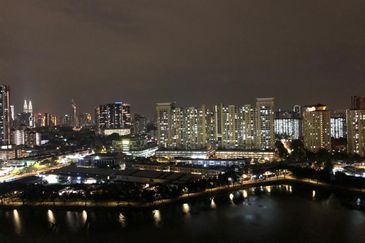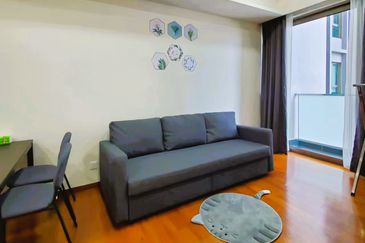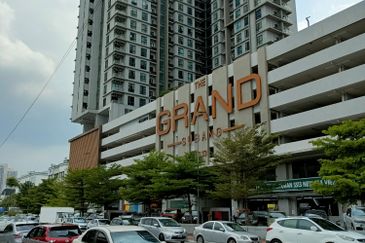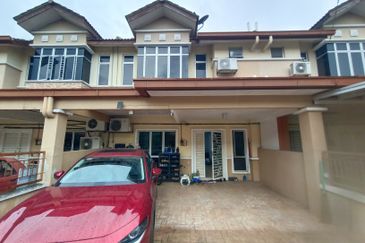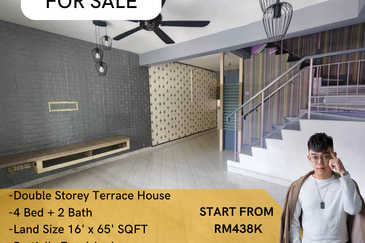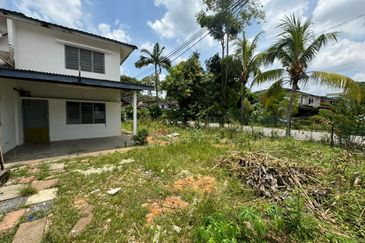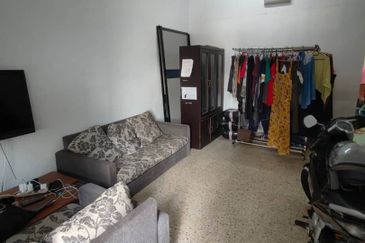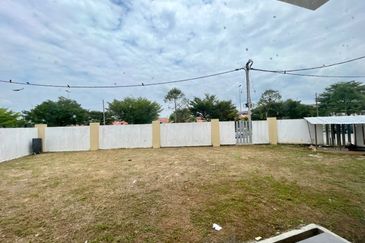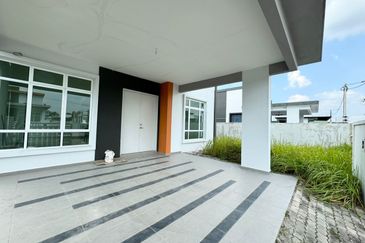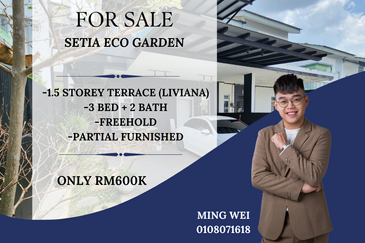Looks can be deceiving. If it were not for the reminders of his pressing engagements — three business associates waiting patiently by his desk — it is easy to forget that Datuk Jamaludin Osman, I & P Group Sdn Bhd’s group managing director, is a very busy man.
Dapper and unflappable, his poise belies his position as the head of a very active property developer with several townships being developed in the Klang Valley and Johor.
These townships include Bandar Kinrara in Puchong, winner of The Edge-PEPS Value Creation Award 2010 and 2011; Alam Impian in Shah Alam; Bandar Baru Seri Petaling in Kuala Lumpur; and Taman Pelangi Indah in Johor Baru, to name but a few.
The group, which is the result of a merger between Island & Peninsular Sdn Bhd, Petaling Garden Sdn Bhd and Pelangi Sdn Bhd in 2009, is busy with launches every other month, precipitated by its Mad About Homes campaign where all its products are brought under one roof.
“We may make it more exciting … add some entertainment or some games … it will be more sophisticated in the sense that there will be more entertainment during the campaign,” says Jamaludin.
Another reason I & P has stayed out of the papers may be because its massive landbank — 5,173.52 acres in Johor and the Klang Valley — is enough to keep it occupied for awhile. About 2,959.4 acres in its current townships are earmarked for development, which is expected to generate a minimum of RM8 billion in gross development value (GDV).
In this interview, Jamaludin tells The Edge what makes I & P tick.
The Edge: What is I & P’s business philosophy and the thought process behind its products? Datuk Jamaludin Osman: We have a very good team. Every time we launch, every time there is a product proposed by the architect, we have a very good [team] looking at it to see which product is suitable. We probably have a good term of reference as well before we give it to the architect or consultants. You see, that term of reference is very detailed and it is drafted after taking into consideration some feedback from consumers.
Datuk Jamaludin Osman: We have a very good team. Every time we launch, every time there is a product proposed by the architect, we have a very good [team] looking at it to see which product is suitable. We probably have a good term of reference as well before we give it to the architect or consultants. You see, that term of reference is very detailed and it is drafted after taking into consideration some feedback from consumers.
This term of reference that we build on customer research is based on the needs of purchasers and their feedback. What do they like to see in their house, besides the façade? Maybe some of them like a powder room, for example. Then, if we see that there is a space for it, we will accommodate that.
 Basically, they would love a big master bedroom. They would love a good kitchen, a big kitchen. So taking into consideration everything, we will draft a term of reference and then give it to the architect, and when the architect draws [the plans] we [will then] comment … looking at the practicality [of the plans] because, we are building for people, we are not building for us [the group or the architects]. So that means we have to take a very general view, not what we like.
Basically, they would love a big master bedroom. They would love a good kitchen, a big kitchen. So taking into consideration everything, we will draft a term of reference and then give it to the architect, and when the architect draws [the plans] we [will then] comment … looking at the practicality [of the plans] because, we are building for people, we are not building for us [the group or the architects]. So that means we have to take a very general view, not what we like.
On top of that, during construction, the standard of the contractor has to be good. We emphasise that to the contractor because we want good quality and we pay you, that’s why we are talking about long-term business relationships. That’s why you build that thing, it’s not for me, it’s for
others. So that means you have to develop your reputation too as a contractor to build quality products.
That’s basically in principle. We as a team — I & P and the consultants — take into consideration consumer feedback and produce the product so it is basically a very simple process.
Your architecture has been described as very sensible and suitable for the local climate. Would you say I & P has a trademark style and design?
I would say our style is contemporary. We don’t go for a very modern look. It’s always taking into consideration the climate, the condition of our environment and the weather and all that, and you will see that very rarely, none so far I think of our houses has modern designs. They are all pitched roofs and all that. The most suitable for our weather, you see.
It will be nice to have all that [modern detail] but the next question is, is it suitable for our weather? Because the heavy rain will create a lot of leakage and you see that in all our developments, our designs are very Malaysian.
Are any of your developments certified green?
None of our developments are certified green but we do implement green
elements. I think green features must be slowly introduced to the public because the general public must be able to appreciate and make use of those green features.
[We must] educate the customers, then one day, I believe everybody will be looking for green [homes] because I feel that [while] some of them understand it very well, some couldn’t be bothered about green features. That’s why we introduce green elements one by one rather than a full mention.
So, for example, rainwater harvesting. We see if people use it or not, if it gives problems or not. And then, of course, through that we will improve [the product] for them.
So we introduced [green features] and a few of the units under construction now have rainwater harvesting. We would love to see feedback from the consumers, how they make use of it.
I would also love to see the consumers take care of the landscaping outside their homes. Because now consumers rely on the authorities to take care of the environment but if we can have them care of the environment, like at the back and the front [of their homes], that would be good. Some love it, but some couldn’t be bothered.
The authorities have certain limitations because to me green is not only about usage and energy but overall.
Is there anything you do in your townships to get residents to become proactive?
No, not yet. I think we plan to. Probably we need to have a certain gathering to educate them — pamphlets and all that to be distributed during the handing over. After that, how to take care of the landscaping outside the house, making the environment better and enhancing the value of the units.
One of your ongoing campaigns is Mad About Homes. Can you give us a bit of background on the campaign? It started in about 2008. Until now, we’re still using it. I think we will continue to use it. It will be at least twice a year. We group all our products into one centre. Let’s say you want to buy Alam Impian or Bandar Kinrara, you just go to one centre as opposed to going to various centres in Bangi, Klang, Shah Alam … we will have one centre where all our products will be featured.
It started in about 2008. Until now, we’re still using it. I think we will continue to use it. It will be at least twice a year. We group all our products into one centre. Let’s say you want to buy Alam Impian or Bandar Kinrara, you just go to one centre as opposed to going to various centres in Bangi, Klang, Shah Alam … we will have one centre where all our products will be featured.
We will also do a smaller one so you can compare the products. It’s only one place. For example, if I do it in Kinrara, you can also see Alam Sari, for example. So it means that you go there, you can see a variety of products from different townships.
The idea is to make it easy for the general public. If they are not interested, they can tell their friends. It is also to introduce buyers to a new market because sometimes they may not be aware.
What are I & P’s strengths as a developer? What is it that you hope to improve as a developer? How?
I think our strength is that we have been long and well established. And then our reputation for delivering what we promise with acceptable quality. Whatever we promise, we deliver either ahead of or on time.
And then there is also the capital appreciation of our products. You purchase Bandar Kinrara [for example], and you will not lose money. It does not matter if you are the vendor or the homeowner, but you will feel good. ‘I bought it at RM500,000, now I sell it for RM800,000’, and then you look at the next phase and go, ‘Wah, I bought my house for RM500,000 last time, now you must pay RM900,000 to buy one. I untung (profit) RM400,000!’
[In terms of improving ourselves] … I think we always want to improve in terms of design, in terms of look, in terms of vision, but … I would love that homebuyers and the authorities, whoever is concerned, maintain the development the best they can and this is where sustainability is the aim.
Your plans to work towards that?
Now we are taking steps to maintain the landscaping for one to two years before handing it over to the authorities. We make sure that the trees are well grown or if there are missing drain covers, we replace them.
What is your sales target for this year?
We are targeting total revenue of about RM1 billion this year. Maybe more. I do not know yet because there is another three months to go, so we will see how.
What is your view of the property development scene for the near future?
Look at it this way, we have been developing for umpteen years. To me, development is always going on. The outlook is all the same because people will still be building. Five years ago, 10 years ago, 15 years ago, there has always been demand, there have always been jobs created, there have always been new people coming to the Klang Valley.
To me, those are the people who become purchasers. And so development will go on and on. The only difference is probably the concept, the prices and the way we develop. That is how I look at it.
The theory of supply and demand is always working.
What are some of the challenges that you foresee for the industry in the near future?
I think some of the challenges probably would be complying with the requirements of the authorities and also customer demand, so we need to be ready to overcome these challenges.
For instance, changes to the law to protect customers — probably there may be some new requirements that will be imposed on how developers must deliver their products. But I believe developers will overcome those challenges because the laws are there to guide developers and protect consumers.
What are the trends in property development now?
Whatever the government is embarking on, such as PR1MA, wherever possible, we are looking at taking part by designing affordable housing.
The housing project we have in Meru (Selangor) is on our own land which is 398 acres of freehold land. We are planning now and there will be certain areas designed for affordable housing.
It will have a projected GDV of RM2 billion and is scheduled to be launched in 2013.
Any more plans to go into affordable housing?
No, it will be in tandem with market needs and also to support the government’s initiative.
Look at it this way, if everyone provides a certain portion, then there will be more affordable homes, right? You cannot just rely on one developer to supply more affordable homes than the others. It has to be everybody embarking on the scheme.
Another trend is lifestyle. It is about making the place as nice as possible within a budget. You can see it in the property advertisements and environment now.
I think a common thing now is entrance statements and we are embarking on that now. It gives you a sense of where you are staying now, like in Bandar Kinrara and Desiran, for example. Rather than in the past, when I said I lived in Phase 2, I say I live in Desiran. It also makes it easier to find the place.
Do you think consumers are still willing to pay the premium necessary for these lifestyle elements?
I think so. Recently, we were selling terraced houses at Alam Impian and people were queuing even though we were selling them at RM700,000. So, in that sense, I think what people want is a unit with certain features and environment. Alam Impian is very green. It has more space, not like old townships.
I think the other thing is that the prices of property will not come down. They may be stagnant but they will not come down. I am speaking from experience. We hardly see the prices of properties you buy today coming down tomorrow.
This article appeared in City & Country, the property pullout of The Edge Malaysia, Issue 878, Oct 3-9, 2011
TOP PICKS BY EDGEPROP
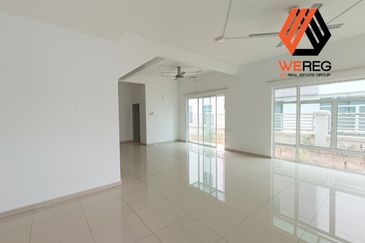
Ridgewood Canary Garden @ Bandar Bestari
Klang, Selangor
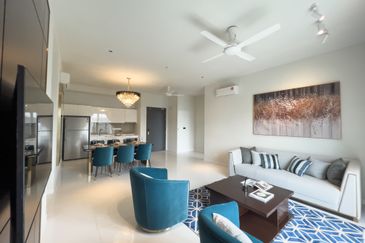
Oxford Residences @ Pavilion Embassy
Keramat, Kuala Lumpur

Plenitube Harp @ Taman Desa Tebrau
Johor Bahru, Johor

Telok Panglima Garang Industrial Zone
Telok Panglima Garang, Selangor
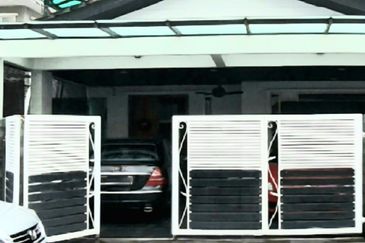
Bandar Botanic
Bandar Botanic/Bandar Bukit Tinggi, Selangor
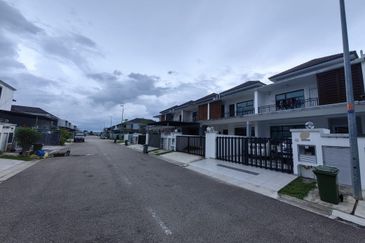
Clarinet @ Taman Desa Tebrau
Johor Bahru, Johor
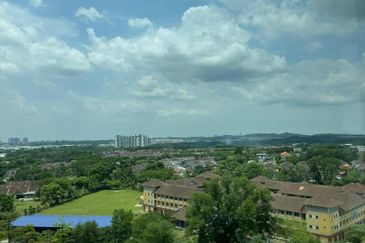
Nusa Perdana Serviced Apartment
Gelang Patah, Johor



